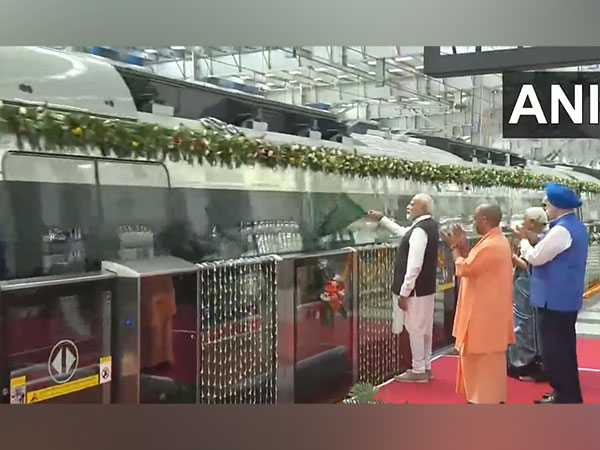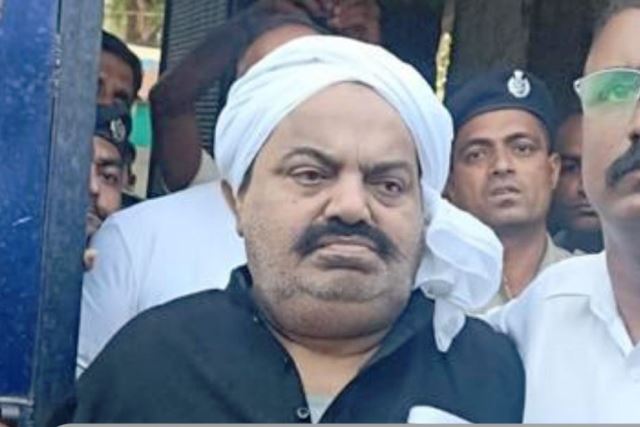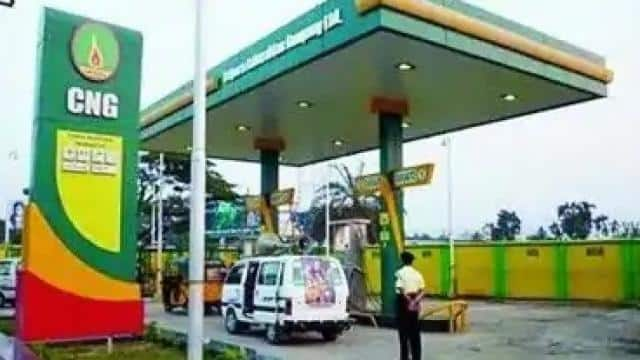Prime Minister Narendra Modi on Friday inaugurated the priority section of the Delhi-Ghaziabad-Meerut Regional Rapid Transit System (RRTS) Corridor at Uttar Pradesh’s Sahibabad RapidX station– a state-of-the-art regional mobility solution aimed to transform regional connectivity in the country through construction of new world class transport infrastructure.
The Prime Minister also flagged off the RapidX train connecting Sahibabad to Duhai depot, marking the launch of RRTS in India. This is India’s first RapidX train which will be known as “Namo Bharat”.
The 17 km priority section of Delhi-Ghaziabad-Meerut RRTS Corridor will connect Sahibabad to Duhai depot with stations at Ghaziabad, Guldhar and Duhai on the way. The foundation stone for Delhi-Ghaziabad-Meerut corridor was laid by the Prime Minister on March 8, 2019. With the train service operational, the travel time between Sahibabad and Duhai Depot will be 12 minutes, which would usually take around 30-35 minutes by road.
The RRTS project is developed in line with the Prime Minister’s vision to transform regional connectivity in the country through construction of new world class transport infrastructure. The RRTS is a new rail-based, semi-high-speed, high-frequency commuter transit system.
With a design speed of 180 kmph, RRTS is a transformational, regional development initiative, which is designed to provide high-speed trains for intercity commuting every 15 minutes, which can go up to a frequency of every 5 minutes as per requirement.
A total of eight RRTS corridors have been identified to be to be developed in the National Capital Region (NCR), out of which three corridors have been prioritised to be implemented in Phase-I including Delhi – Ghaziabad – Meerut Corridor; Delhi – Gurugram – SNB – Alwar Corridor; and Delhi – Panipat Corridor.
The Delhi-Ghaziabad-Meerut RRTS being developed at a cost of more than Rs 30,000 crore, and will connect Delhi to Meerut in less than an hour of travel time going through the urban centres of Ghaziabad, Muradnagar, and Modinagar. The 82-km Delhi-Meerut section is likely to be completed by 2025.
RRTS, being developed in the country, is a state-of-the-art regional mobility solution, and is comparable to the best in the world. It will provide safe, reliable and modern intercity commuting solutions in the country.
In line with PM GatiShakti National Master Plan, the RRTS network will have extensive multi-modal-integration with Railway stations, Metro stations and Bus services. Such transformative regional mobility solutions will boost economic activity in the region; provide improved access to employment, education and healthcare opportunities; and help in significant reduction of vehicular congestion and air pollution.
This new dedicated, high-speed, high-capacity, commuter service, the RRTS is different from both conventional railways as well as Metros.
It is better than conventional railways as it provides reliable, high-frequency, point-to-point regional travel.
It is different from Metros as it caters to passengers who are looking to travel a comparatively longer distance with fewer stops and at a higher speed.
Offering comfortable seats and air conditioning, the priority section of RRTS is going to uplift travel in Ghaziabad.
Otherwise, the options so far for the commuters were public autorickshaws and buses, or private buses or taxis, amid the hot and humid weather clubbed with traffic.
The Sahibabad RRTS station from where the Prime Minister flagged off India’s first RapidX train is just 4 km away from the Vaishali Metro Station situated on the Blue line of the Delhi Metro. (ANI)
Read More: https://lokmarg.com/



